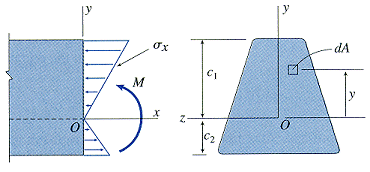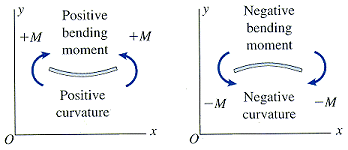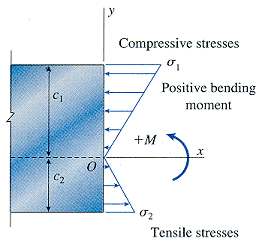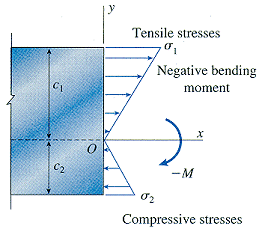Transverse strains (normal strains in the y and z directions) are present in a beam due to Poisson's ratio, but there are no transverse stresses because the beam is free to deform in those directions. (i.e. longitudinal elements in a beam in pure bending are in a state of uniaxial stress -- tension or compression) These stresses act over the entire cross section and vary in intensity depending on the shape of the stress-strain diagram and the dimensions of the cross section. For a linear elastic material,
 |
 |
location of neutral axis
The neutral axis passes through the centroid of the cross-sectional area when the material follows Hooke's law and there is no axial force acting on the cross section.
see A1
moment-curvature relationship

where I is the moment of inertia (units: in4, m4) of the cross-sectional area with respect to the neutral axis. Note the following sign convention.
see A5
W-shape beams by Dr. Chien-Chung Chen
flexure formula
Stresses calculated from the flexure formula are called bending stresses or flexural stresses.

see M8.4



